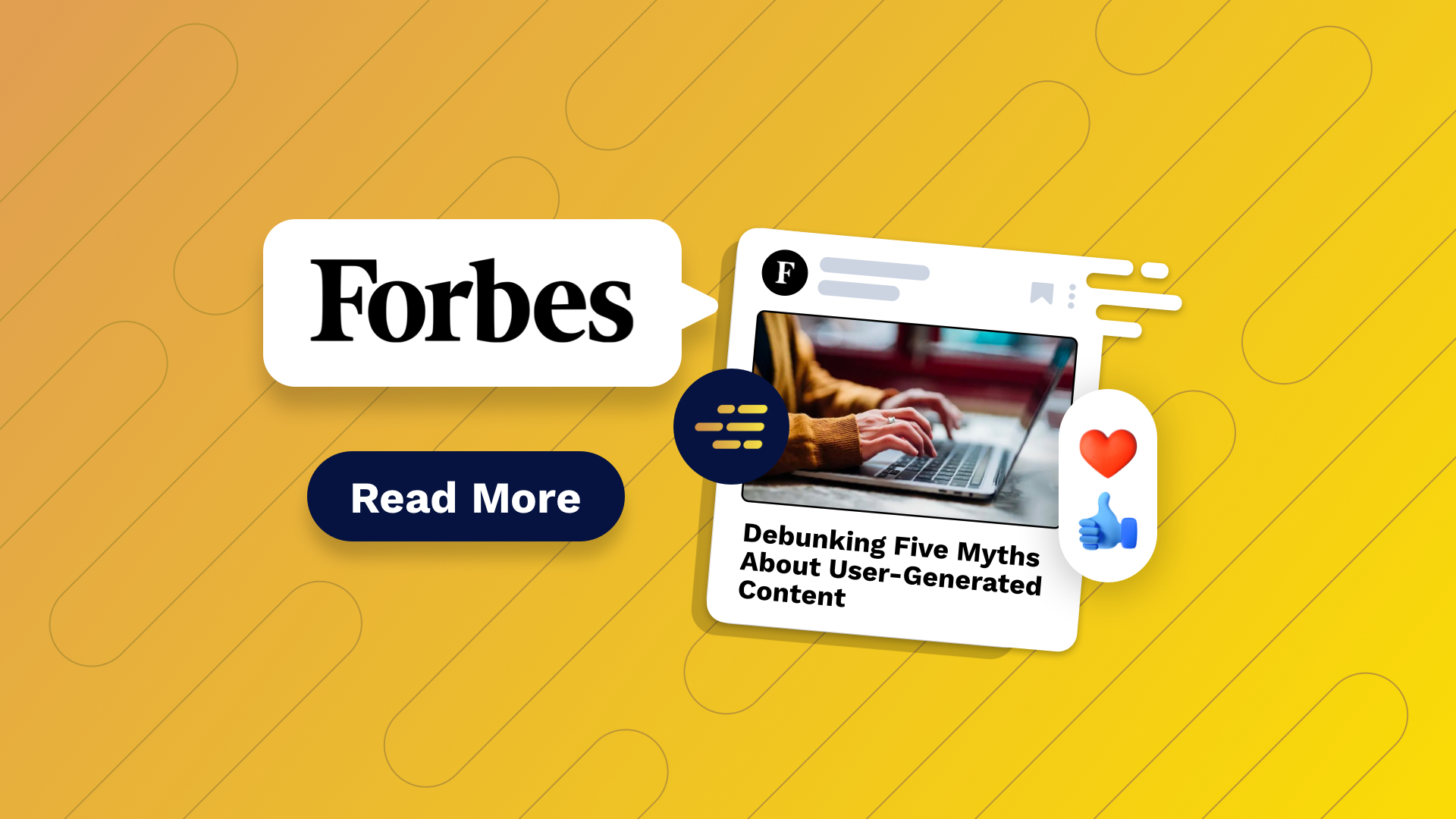Debunking 5 Myths About User-Generated Content
August 2023
#Engagement
#Monetization

Content is great, but user-generated content (UGC) is better. User-generated content allows publishers to tap into their target audience’s interests, with content engagement that resonates with them.
Studies have shown that UGC can influence purchasing decisions, with 79% of consumers acknowledging its impact on their purchasing decisions. 80% of online shoppers are more inclined to purchase a product if the website displays authentic reviews and unedited customer media. See what Neil Patel has to say about UGC’s importance
While many brands have embraced UGC in their content marketing strategies, there are still misconceptions. Let’s debunk the top five common myths that I’ve encountered around user-generated content and offer solutions — insights originally shared in Forbes on July 17th, 2023
1. Social media is always the best platform for engagement.
Reality: Social media may not always be the best option for engagement due to limited content visibility and unreliable engagement metrics. Social media users have short attention spans and face tough competition. Creating content that connects with the target audience can be difficult. The available monetization options have some restrictions.
To tackle these challenges, consider redirecting your target audience to your website or app. Enhance their experience by incorporating features such as like and comment buttons. Take it a step further by gathering email addresses and tracking users’ interests. This way, you can send targeted emails aligned with their interests, fostering direct content engagement and loyalty.
I believe that the future of social engagement is in exploring online communities that focus on users’ specific interests. I’ve been presenting the concept that “the future of social media is distributed, and it’s not siloed in the walled gardens” at speaking events and publishing conferences, emphasizing the potential for social experiences across distinct communities.
Finding communities where like-minded individuals eagerly embrace your voice is crucial. This allows you to understand their interest, share your existing content, and have meaningful interactions. By adopting this approach, you can overcome the limitations and short attention spans associated with social media platforms. Instead, you’ll engage with a targeted audience that shares your interests, fostering loyalty and meaningful connections. The key is to have social experiences beyond typical platforms. Connect with individuals who genuinely engage with your content and brand.
2. User-generated content is easy to curate and moderate.
Reality: Curating and moderating UGC can be a time-consuming and challenging task. Publishers need to align UGC with their brand standards and legal requirements, which can require significant time and resources.
I firmly believe that AI plus humans will be the go-forward approach for curating and moderating user-generated content. While AI technology continues to advance, it will take time before it can effectively handle the majority of moderation tasks. See what we have to say about emerging AdTech trends in this blog post.
To address this challenge, I recommend focusing on your content moderation efforts within your community. For instance, when managing a commenting section, it is beneficial to align user comments with your brand guidelines. This approach helps eliminate spam and maintains a clean, engaging environment for your community.
3. User-generated content is free.
Reality: Let me be clear, as someone who knows this industry inside-out: User-generated content is not free. It is funded by advertising revenue or paid subscriptions, which is important to remember in the current reality.
To address this, publishers should view UGC as a valuable addition, not a replacement for professional content. Encourage engagement through meaningful comment sections and transform standout comments into new content. This approach generates fresh ideas without extra cost.
By balancing professional and user-generated content, publishers can enhance engagement, attract a wider target audience, and enrich their offerings without relying solely on traditional content marketing strategies.
Publishers can improve engagement and attract more people by combining professional and user-generated content, expanding their offerings beyond traditional methods.
4. User-generated content is only valuable for engagement, not revenue.
Reality: When you prioritize engaging with others, you also increase how well people know your brand on social media and publishing sites. It’s a powerful way to boost your brand’s name and exposure.
Content engagement goes hand in hand with revenue when you seize advertising opportunities. When you’re driving engagement metrics, you’re driving more brand awareness. It’s about leveraging advertising partnerships and product promotions to propel sales and revenue.
To make money from UGC, I suggest forming partnerships to get users more involved and make money from ads.
5. User-generated content is only relevant to certain industries, like travel or food.
Reality: UGC holds value across industries. It’s the beating heart of any community—whether it’s centered around travel, food, sports, books or even flying a plane—and the key catalyst that breathes vibrant life into these spaces, driving the pulse of any group.
In my experience, user-generated content fuels digital human connections. Across all industries, it’s the core of online interactions. For instance, if you’re a B2B publisher, you can leverage it in case studies or white papers to showcase the effectiveness of your products or services.
To determine the suitability of UGC for your business, I recommend testing various ideas with your team and implementing them to gauge their effectiveness. This approach will help you identify the best way to harness it for your audience and industry.
To learn more about why comment sections are imperative for user-generated content, check out what we have to say about their impact on online communities and the AdTech trends moving into next year.

Written by
Jenni Silva-Dunne, Head of Content & Project Operations, Insticator



